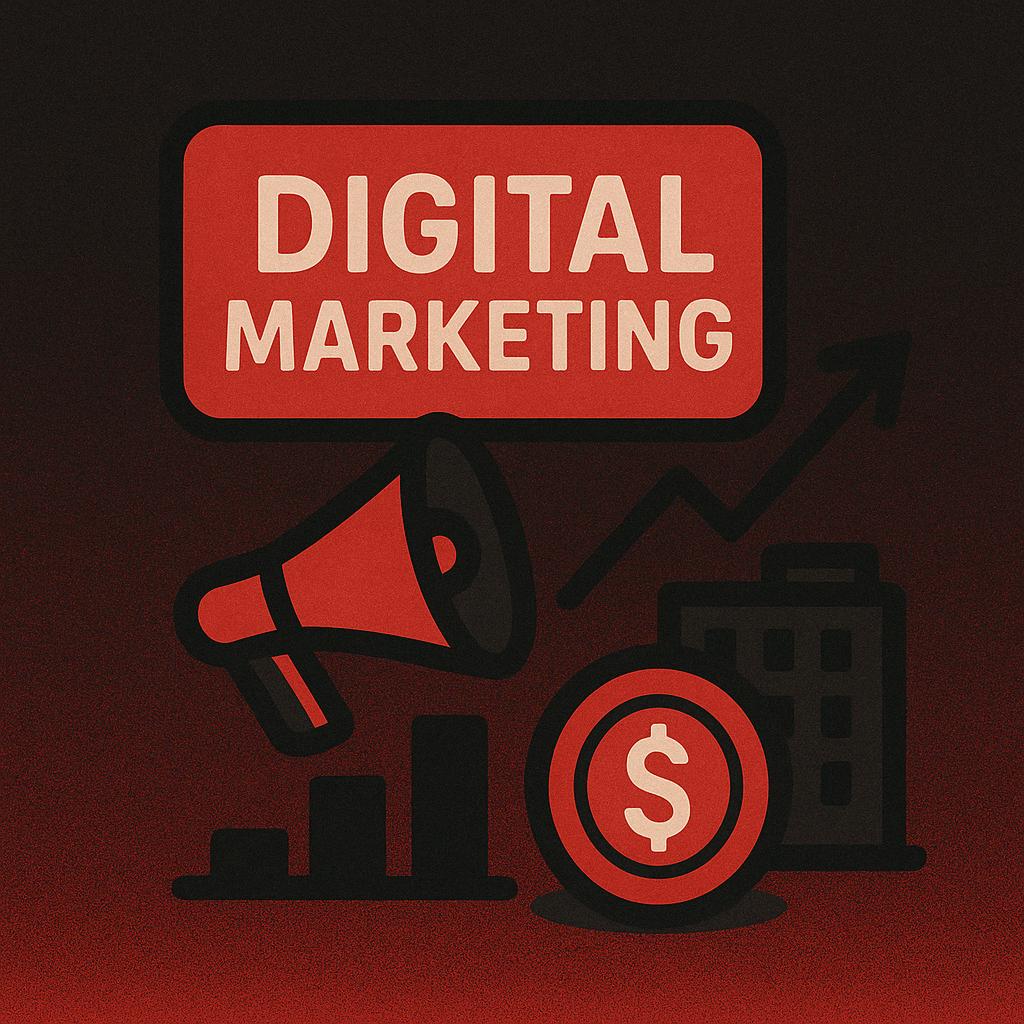In the bustling digital metropolis of the 21st century, a website is not just a mere presence; it’s a statement. It’s where your brand’s voice echoes, and where your offerings shine. But amidst the cacophony of the online world, how do you ensure your website doesn’t just become a whisper? This is where the art and science of website promotion come into play.
“Promote website” might sound like a straightforward task, but in reality, it’s a multifaceted endeavor. Just as a brick-and-mortar store needs strategic placement and advertising, your digital storefront requires meticulous website promotion to stand out. The phrase “If you build it, they will come” might resonate with dreamy baseball fields, but when it comes to the digital realm, active promotion is the name of the game.
Consider this: As of January 2023, the internet is a vast ocean with over 1.8 billion websites. In such a scenario, merely having a website isn’t enough. To rise above the noise, you need to actively promote website strategies tailored to your brand’s unique voice and audience. Think of website promotion as the beacon that guides potential customers to your digital doorstep.
Now, imagine two digital landscapes. One is vibrant, with strategic “promotion site” markers, engaging content, and active engagement. The other, though beautifully designed, lacks the signposts to guide visitors. Which landscape would thrive? The answer underscores the undeniable importance of website promotion in today’s digital age.
From organic strategies like SEO to paid avenues, the toolkit for promotion is vast and varied. As we journey through this guide, we’ll explore these tools, helping you craft a robust strategy to ensure your website isn’t just another drop in the vast digital ocean but a lighthouse guiding visitors home.
Mastering the Art of SEO

Search Engine Optimization (SEO) is akin to the art of alchemy in the digital world. It’s the process of turning your website’s content into digital gold, making it more visible and attractive to search engines and, by extension, your target audience. It’s the answer to the often-asked question of “how to promote website” effectively in the digital age.
Importance of Easy Keywords: Starting with Low-Hanging Fruits
Imagine a tree laden with fruits. While the juiciest ones might be at the top, there are plenty within arm’s reach, waiting to be plucked. In the world of SEO, these are your “easy keywords.”
Easy keywords, often termed as “long-tail keywords,” are specific phrases with lower search volume but also lower competition. For those looking to promote website free of high costs, targeting these keywords can be a game-changer. Why? Because they offer a quicker path to ranking on search engine results pages (SERPs).
The beauty of focusing on easy keywords is that it’s a stepping stone strategy. You start small, gain traction, and then aim higher.
Optimizing Existing Pages: Making the Most of What You Already Have
Before venturing out and creating new content, take a moment to reflect on your existing assets. Your website likely already has a wealth of content that can be optimized for better “website promotion.”
Consider this: It’s like renovating an old house. Instead of building a new one from scratch, you can make improvements, add extensions, and give it a fresh coat of paint. Similarly, by updating old blog posts, improving meta descriptions, and ensuring mobile responsiveness, you can breathe new life into your existing pages.
A study by HubSpot revealed that updating old blog posts can increase search traffic by up to 106%. That’s the power of optimization!
Backlink Building: Outreach and Strategies for Quality Links
In the realm of SEO, backlinks are the currency of trust. Think of them as votes of confidence from other websites, signaling to search engines that your content is valuable and authoritative.
However, not all backlinks are created equal. A link from a reputable source like The New York Times will carry more weight than a link from a lesser-known blog. Hence, the focus should be on quality over quantity.
Building backlinks involves strategies like guest posting, creating shareable infographics, and outreach to industry influencers. Remember, it’s about forging genuine relationships and offering value, not just seeking a link.
The Power of Search-Optimized Content: Writing for Both Users and Search Engines
At the heart of SEO lies content. But it’s not just about churning out articles; it’s about creating content that resonates with both users and search engines.
Imagine a librarian trying to recommend a book. She’ll consider the book’s content, its popularity among readers, and its relevance to the query. Search engines operate similarly. They want to present the best, most relevant content to their users.
To achieve this, focus on understanding your audience’s needs, answering their questions, and providing value. Incorporate relevant keywords naturally, use engaging visuals, and ensure readability. As the old SEO adage goes, “Write for humans, optimize for bots.”
Content is King

In the vast expanse of the digital realm, content stands tall as the reigning monarch. It’s the heartbeat of every website, the magnet that pulls in visitors, and the voice that communicates a brand’s ethos and value. When Bill Gates proclaimed, “Content is king,” he wasn’t merely making a statement; he was forecasting the future. Today, as businesses scramble on how to promote website effectively, the answer often lies in the quality of content they produce.
Starting a Blog: Benefits and Best Practices
Venturing into the world of blogging is one of the most effective ways to advertise your website. A blog isn’t just a digital diary; it’s a dynamic platform that bridges the gap between businesses and their audience.
Benefits:
- Engagement: Through a blog, you create a community, sparking discussions and garnering feedback.
- Authority: Regular insightful content cements your position as a thought leader in your industry.
- SEO Boost: Fresh, relevant content is a beacon for search engines, signaling that your website is alive and kicking.
Best Practices:
- Consistency is Key: Like any media outlet, maintaining a regular posting schedule is crucial.
- Quality Over Quantity: Instead of churning out content, focus on producing articles that add genuine value.
- Engage with Your Readers: Foster a two-way conversation. Respond to comments, encourage discussions, and always be receptive to feedback.
Guest Blogging: How to Find Opportunities and Make the Most of Them
Guest blogging is a strategic move to advertise your website on broader platforms. By sharing your expertise on other websites, you not only gain exposure but also build valuable backlinks.
How to Find Opportunities:
- Research: Identify industry-specific blogs or platforms that welcome guest contributions.
- Community Engagement: Participate in blogging communities or forums to discover opportunities.
- Network: Connect with fellow bloggers or industry stalwarts.
Making the Most of It:
- Align with the Audience: Ensure your content resonates with the host website’s readership.
- Bio Matters: Craft a compelling author bio that entices readers to visit your website.
- Promote: Once published, share your guest post across your channels to maximize visibility.
Repurposing Content: Leveraging One Piece for Multiple Channels
Why create from scratch when you can remodel? Repurposing is about taking a piece of content and molding it to fit different platforms. A blog post, for instance, can metamorphose into a podcast, a video, or even a series of tweets.
Advantages:
- Extended Reach: Different formats cater to diverse audience preferences.
- SEO Perks: Varied content types can target a broader range of keywords and offer multiple backlink opportunities.
- Efficiency: Get more bang for your buck by maximizing the utility of each content piece.
Harnessing Social Media

In the vast digital landscape, social media platforms stand as bustling metropolises, teeming with potential customers, clients, and fans. They’re not just platforms; they’re powerful tools that, when harnessed correctly, can catapult your brand into the limelight.
Engaging with Your Audience: Building a Community Around Your Brand
Social media isn’t a one-way street. It’s an interactive arena where brands can converse, engage, and build lasting relationships with their audience.
Benefits:
- Loyalty: Regular engagement fosters brand loyalty and trust.
- Feedback: Direct communication allows for immediate feedback and insights.
- Brand Personality: Show the human side of your brand, making it relatable.
Tips for Effective Engagement:
- Listen Actively: Monitor mentions, comments, and messages. Respond promptly.
- Host Interactive Sessions: Consider Q&A sessions, polls, or live videos to interact in real-time.
- Celebrate Your Community: Share user-generated content, testimonials, or success stories.
Social Media Advertising: When and How to Invest
While organic reach is valuable, there’s undeniable power in paid social media advertising. It’s targeted, measurable, and offers immediate results.
When to Invest:
- Product Launches: Amplify your reach during new product or service launches.
- Promotions: Advertise sales, discounts, or special offers.
- Brand Awareness: Reach a new audience and expand your brand’s visibility.
How to Invest:
- Targeting: Use platform-specific tools to target demographics, interests, and behaviors.
- A/B Testing: Test different ad formats, visuals, and copy to see what resonates.
- Monitor and Adjust: Regularly review ad performance and adjust strategies accordingly.
Syndicating Content: Sharing Your Content on Different Platforms
Content syndication is the practice of republishing your content on third-party platforms, amplifying its reach and driving traffic back to your original post.
Benefits:
- Extended Reach: Tap into new audiences and platforms.
- SEO Boost: Gain backlinks and improve domain authority.
- Credibility: Being featured on reputable platforms enhances brand credibility.
How to Syndicate:
- Choose the Right Platforms: Research platforms relevant to your industry and audience.
- Reformat if Necessary: Adjust content to fit the style and guidelines of the third-party platform.
- Include a Call-to-Action: Direct readers back to your original content or website.
In the digital age, social media is the town square, the coffee shop, and the marketplace all in one. By effectively harnessing its power, brands can not only promote but also create meaningful connections.
Creating Resources: Offering Value to Attract Visitors
In the quest for free promotion for website, offering resources can be a game-changer. These can range from e-books and templates to webinars and tutorials.
Why Offer Resources?
- Lead Generation: A valuable resource can entice visitors to share their email, building your subscriber base.
- Authority: Detailed resources showcase your in-depth knowledge, further establishing your expertise.
- Engagement: Shareable resources can go viral, significantly boosting your website’s visibility.
In an era where consumers are bombarded with information, it’s quality content that offers genuine value that truly stands out. So, as you strategize on how to advertise your website, remember that content isn’t just king; it’s the entire kingdom.
Building Relationships and Outreach

In the vast expanse of the digital universe, no website is an island. Building relationships and reaching out to like-minded entities can significantly amplify your brand’s voice, credibility, and reach. It’s akin to networking in the physical world, but with the added advantage of digital tools and platforms at your disposal.
Collaborative Ventures: Joint Courses, Webinars, and Partnerships
Collaboration is the magic potion of the digital age. By joining forces with other brands or experts, you can tap into new audiences, share resources, and offer enhanced value.
Benefits:
- Expanded Audience: Access the followers or subscribers of your collaborators.
- Shared Expertise: Combine strengths to offer comprehensive content or services.
- Resource Efficiency: Share the workload, costs, and promotional efforts.
Ways to Collaborate:
- Joint Courses: Combine expertise to offer online courses that cater to a wider audience.
- Webinars: Host joint webinars, bringing in experts from various fields to discuss relevant topics.
- Partnerships: Form strategic alliances with complementary brands to co-promote or co-create products/services.
Digital PR: Getting Free Press and Media Attention
Digital PR is the modern twist on traditional public relations, leveraging online platforms to gain brand exposure. It’s about creating buzzworthy stories and getting them in front of the right digital audience.
Strategies:
- Press Releases: Announce newsworthy events, product launches, or milestones.
- Influencer Collaborations: Partner with digital influencers to review or promote your brand.
- Media Pitches: Craft compelling stories and pitch them to relevant digital media outlets.
A single feature in a prominent online magazine or blog can skyrocket your brand’s visibility and credibility.
Outreach Marketing: Strategies for Effective Outreach
Outreach marketing is the proactive approach of reaching out to potential partners, customers, or promoters. It’s about building genuine relationships, not just seeking immediate gains.
Effective Strategies:
- Personalization: Tailor your outreach messages to resonate with the recipient.
- Value Proposition: Clearly communicate what’s in it for them.
- Follow-Up: Persistence pays. Politely follow up if you don’t get a response initially.
Outreach is not about selling; it’s about building relationships that can lead to mutual growth.
By focusing on genuine connections and collaborations, brands can build a robust foundation for sustainable growth.
Email Marketing: The Underrated Powerhouse

In the ever-evolving digital marketing landscape, some tools come and go, but email remains a stalwart champion. Often overshadowed by flashier platforms, email marketing’s potency is undeniable. It offers direct access to your audience, bypassing algorithms and delivering your message straight to their inbox.
Building an Email List: Why It’s Crucial and How to Do It
An email list is more than just a collection of addresses; it’s a direct line to your most engaged audience. These are individuals who’ve expressed interest in your brand, products, or services and have given you permission to communicate with them.
Why It’s Crucial:
- Direct Communication: Unlike social media, where your posts might get lost in the feed, emails land directly in the recipient’s inbox.
- High ROI: According to the Direct Marketing Association, email marketing has an average ROI of 4300%.
- Personalization: Segment your list and tailor your messages to specific audience groups.
How to Build Your List:
- Opt-In Forms: Place sign-up forms on your website, especially on high-traffic pages.
- Lead Magnets: Offer valuable resources (e.g., e-books, templates) in exchange for email sign-ups.
- Engage on Social Media: Promote your email sign-up on your social channels, highlighting the benefits of subscribing.
Starting a Newsletter: Engaging Your Subscribers with Valuable Content
A newsletter is more than just a periodic update; it’s an opportunity to provide value, foster loyalty, and drive action.
Benefits:
- Regular Engagement: Stay top-of-mind with your subscribers by sending consistent updates.
- Drive Traffic: Use your newsletter to direct subscribers to your latest blog posts, product launches, or promotions.
- Build Trust: Share insights, stories, and valuable content to establish authority in your niche.
Tips for a Successful Newsletter:
- Consistent Schedule: Whether it’s weekly, bi-weekly, or monthly, stick to a regular schedule.
- Valuable Content: Prioritize quality over quantity. Share content that benefits the reader.
- Engaging Design: Use visuals, headers, and a clean layout to make your newsletter visually appealing and easy to read.
By harnessing the power of email marketing, brands can create meaningful, lasting relationships with their audience.
Paid Advertising: When and How to Invest

In the vast ocean of digital marketing, while organic strategies are the steady currents driving long-term results, paid advertising is the powerful wave that can bring immediate impact. But like any powerful force, it requires careful navigation. Knowing when and how to invest in paid advertising can be the difference between a successful campaign and a costly misadventure.
Google Ads: Best Practices and Tips
Google Ads, formerly known as Google AdWords, is the behemoth of online advertising. With the vast majority of global search traffic flowing through Google, its advertising platform offers unparalleled reach.
Best Practices:
- Keyword Research: Use tools like Google Keyword Planner to identify high-potential keywords.
- Ad Copy: Craft compelling, concise ad copy that resonates with your target audience.
- Landing Page Optimization: Ensure the landing page you’re directing traffic to is relevant and optimized for conversions.
Tips:
- Geo-Targeting: Target ads based on specific locations to reach a more relevant audience.
- Ad Extensions: Utilize ad extensions to provide additional information like phone numbers or site links.
- Monitor & Adjust: Regularly review your ad performance. Adjust bids, keywords, and ad copy based on results.
Social Media Ads: Choosing the Right Platform and Strategy
Social media platforms offer a treasure trove of advertising opportunities, each with its unique audience and strengths.
Choosing the Right Platform:
- Facebook & Instagram: Ideal for B2C brands, especially those with visually appealing products or services.
- LinkedIn: Best suited for B2B companies aiming to reach professionals and decision-makers.
- Twitter: Effective for real-time engagement, especially for events, news, or trending topics.
Strategy Tips:
- Audience Segmentation: Tailor your ads based on demographics, interests, and behaviors.
- Visual Appeal: Use high-quality images or videos that resonate with your target audience.
- A/B Testing: Test different ad formats, visuals, and copy to identify what works best.
By strategically investing in paid advertising, brands can not only reach a vast audience but more importantly, the right audience.
Other Effective Promotion Strategies

While SEO, content marketing, and social media often steal the limelight, there’s a myriad of other effective strategies that can bolster your website’s visibility. These unsung heroes, though sometimes overlooked, can provide significant traction, especially when combined with other mainstream tactics.
Online Directories: Getting Listed and Its Benefits
Much like the Yellow Pages of yesteryears, online directories are repositories where businesses can list themselves, making it easier for potential customers to find them.
Benefits:
- Visibility: Enhance your online presence by appearing on popular directories.
- SEO Boost: Quality directory listings can provide valuable backlinks, aiding in SEO.
- Trust Factor: Being listed on reputable directories adds a layer of credibility to your business.
How to Get Listed:
- Research: Identify directories relevant to your industry or niche.
- Complete Profiles: Ensure your business details are accurate and comprehensive.
- Regular Updates: Keep your listing updated with the latest information.
Reviews: Importance and How to Get Them
In the digital age, word-of-mouth has transformed into online reviews. They act as testimonials, influencing potential customers’ decisions.
Importance:
- Trust: 88% of consumers trust online reviews as much as personal recommendations, according to BrightLocal.
- SEO Value: Positive reviews can influence search engine rankings, especially on local searches.
- Feedback Loop: Reviews provide insights into what you’re doing right and areas of improvement.
How to Get Reviews:
- Ask: Encourage satisfied customers to leave a review post-purchase.
- Make It Easy: Provide direct links to your review platforms.
- Respond: Engage with reviewers, thanking them for positive feedback and addressing any concerns.
Forum Engagement: Being Active in Relevant Communities
Forums are online communities where individuals discuss and share insights on specific topics. Engaging in these platforms can position your brand as an industry authority.
Benefits:
- Direct Engagement: Interact with a highly targeted audience.
- Brand Awareness: Introduce your brand to potential customers.
- Feedback: Gain insights directly from your target demographic.
Engagement Tips:
- Genuine Participation: Contribute valuable insights rather than overtly promoting your brand.
- Profile Optimization: Ensure your forum profile is complete and links back to your website.
- Follow Guidelines: Respect the community’s rules to maintain a positive reputation.
Signature Promotion: A Subtle Yet Effective Method
Email signatures, forum signatures, or even blog comment signatures can be optimized to promote your brand subtly.
How It Works:
- Consistent Branding: Include your brand logo, name, and a catchy tagline.
- Link Back: Add a link to your website or a specific landing page.
- Updates: Rotate promotions or CTAs based on current campaigns or offers.
By integrating these strategies into your daily promotional efforts, you can steadily build momentum and achieve lasting success.
Conclusion and Final Thoughts
Navigating the vast digital landscape can often feel like charting unknown territories. With a plethora of strategies at our disposal, the journey to website promotion can seem daunting. However, as we’ve traversed through this guide, it’s evident that while the tools and tactics may vary, the core principle remains the same: delivering genuine value to your audience.
Recap of the Strategies Discussed:
- SEO Mastery: From easy keywords to backlink building, SEO remains the cornerstone of organic digital growth.
- Content’s Reign: Whether it’s starting a blog, guest posting, or creating valuable resources, content is the heart of digital engagement.
- Social Media’s Power: Engaging with audiences, advertising, and syndicating content across platforms amplifies your brand’s voice.
- Relationship Building: Collaborative ventures, digital PR, and outreach marketing emphasize the importance of genuine connections.
- Email Marketing: The underrated powerhouse, from building lists to newsletters, offers direct and personalized engagement.
- Diverse Promotion Strategies: Online directories, reviews, forum engagement, and signature promotions offer unique avenues for visibility.
- Paid Advertising: A strategic investment in platforms like Google Ads and social media can yield immediate and targeted results.
As we wrap up this comprehensive guide, here’s a piece of advice: Don’t feel overwhelmed by the multitude of strategies. Start with one. Master it, see the results, and then expand your horizons. Digital marketing, at its core, is iterative. It’s about trying, learning, and refining.
Remember, Rome wasn’t built in a day, and neither will your digital empire be. But with persistence, strategy, and a focus on value, you’re well on your way to carving out your own digital dominion.
Here’s to your success in the digital realm. May your website shine bright amidst the galaxy of online stars!

 Amazon Marketing
Amazon Marketing


